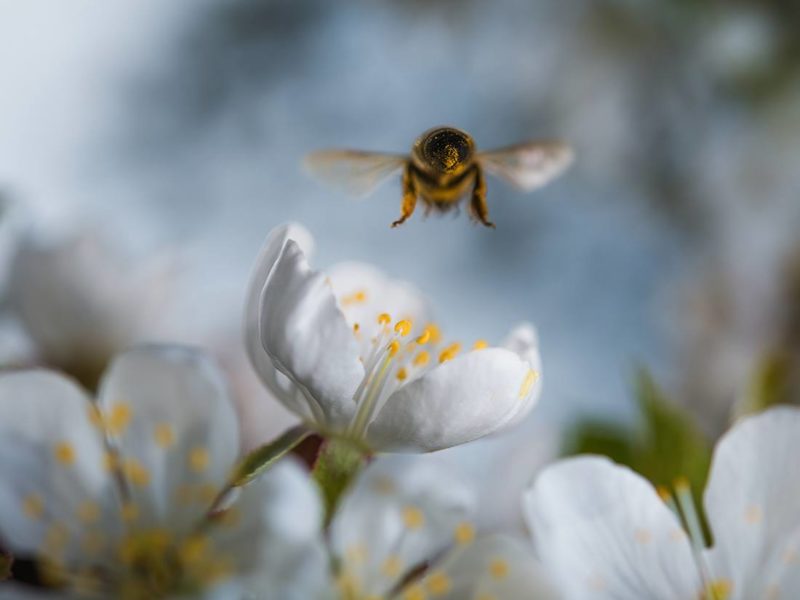We rely on bees every day
According to a 2010 UN report, more than 70 of the 100 crops that provide 90 percent of the world’s food rely on bees for pollination. Apples, almonds, watermelon, pumpkin, blueberries and avocados are some of the commonly eaten crops in the U.S. that rely on bees for pollination. And many other fruits, vegetables and legumes also benefit from insect pollination, making their yields more abundant.
Still, managed honey bees remain the most economically significant pollinator, contributing an estimated $19 billion annually to the U.S. economy.
The future of food
Rapid declines in pollinator populations put additional stress on an already unstable food supply by depressing yields and agricultural efficiency. While pollination biologists do not foresee imminent food system collapse without honey bees, we do know that agriculture would quickly become unrecognizable — and much more limited.
Bees are responsible for one in every three bites of food: from almonds to berries and the alfalfa that feeds dairy cows, our diets and agricultural economy hinge on a healthy bee population.
For more information, see these resources:
- Pollinators vital to our food supply under threat (UN Food & Ag Organization)
- Impacts on the food supply (Center for Food Safety)
- List of pollinated foods (Pollinator Partnership)
- Insect Pollinated Crops, Insect Pollinators and US Agriculture: Trend Analysis of Aggregate Data for the Period 1992–2009 (N. Calderone)






